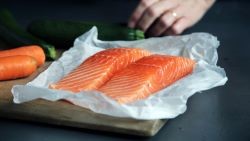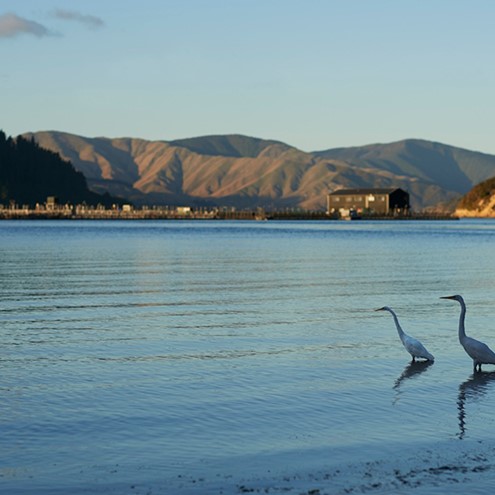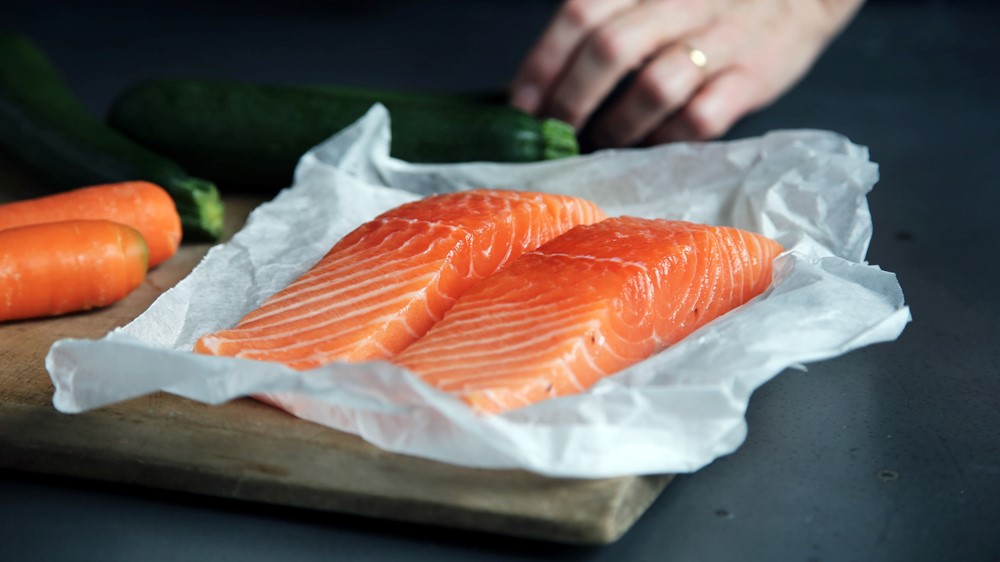Here at Regal Marlborough King Salmon, we think salmon is one of the greatest sources of protein on the market. Packed full of omega 3’s, versatile to cook with and one of the lowest carbon footprint’s; salmon is pretty special. However, we get asked the same questions that often turn out to be myths. See below for the top 7 salmon myths… busted!
1. “Salmon is expensive”
This is by far the most common thing we hear from consumers, and we agree, sort of. Per kilo price comparatively to say chicken or lamb, salmon is definitely up there. However, we need to take into account the amount of edible protein once you remove the bones and fat. Salmon comes in lower to mid range.
Also, you don’t need much – Regal King Salmon is very filling and affordable. Your healthy meal of 125gms will cost you around $3 to $5. You can also add smoked or fresh salmon to pasta and pizzas to make your salmon go further.

2. “Salmon is hard to cook with”
King salmon stores higher levels of natural oils and is therefore extremely forgiving and versatile. Fresh salmon is ready to serve when the flesh turns opaque and can be served rare or eaten raw. It can be cooked virtually any way you like, whether you are oven baking/roasting, barbecuing, grilling/pan-frying, steaming, poaching or even cooking it in your microwave. Our Fresh Cuts also offer a convenient option with a stir fry and loin pack available. Our smoked salmon can be eaten right out of the pack or in a range of recipes to make it go further. For detailed instructions visit our cooking section and for recipe inspiration visit our recipe section.
3. “Salmon goes off quickly”
The shelf life will vary depending on the product, for example our smoked products all stay fresh for over a month, while our Fresh Cuts have a 10 day life and fresh salmon will last 3 - 4 days. There are also multiple storage options that will ensure your salmon stays fresher, longer, including the ability to freeze all Regal products. For more tips visit our storage section.
4. “You dye your salmon pink”
Our salmon feed contains Astaxanthin which is naturally found in algae and krill and is an essential micronutrient for salmon. It is so important to the salmon that they have evolved the capacity to store it in their muscle tissue and that’s what makes salmon pink. If you feed white fish astaxanthin they don't turn pink - it's unique to salmon. Salmon use it to protect their precious omega-3 oils and ultimately it protects their eggs. Because it is such a powerful antioxidant, Astaxanthin is also used in other foods for human consumption, including dietary supplements.
5. “Your feed is unnatural”
No one wants our salmon to be healthier than us. King salmon are renowned for being extremely fussy and we invest a huge amount of time and resource into ensuring they receive a diet that is optimum for their health. Our feed contains ingredients based on the nutritional requirements of wild salmon.
The feed carries Certificates of Analysis from registered laboratories, is certified GMO and BSE-free, and all ingredients are fully traceable. The feed consists of fish meal (sourced from sustainable fisheries), fish oil, animal protein and oil, vegetable protein meals, wheat/starch and vitamins and minerals including the antioxidant Astaxanthin. All protein sources we use in our feed are from those also used for human consumption.
6. “All salmon is the same”
In most cases, Kiwis tend to think of all salmon, simply as salmon. However, that is not the case. With other salmon available in New Zealand supermarkets, anyone concerned with food provenance needs to know the difference between high-quality fresh salmon produced right here in New Zealand and salmon sourced offshore.
Our Regal King Salmon are grown and nurtured locally in the cool, deep waters of the Marlborough Sounds, then harvested and can be delivered to retailers within 48 hours. By comparison, Atlantic salmon is imported (mostly frozen) and can take several weeks to get to New Zealand from places such as Norway or Australia. This, combined with a difference in oil content, means the eating characteristics of the product differ compared to King salmon. King salmon is often referred to internationally by top chefs as offering a superior eating experience.
7. “Wild salmon is better than farmed salmon”
As there is no commercially wild salmon available in New Zealand, aquaculture (farmed salmon) is the only local product on the supermarket shelves. This is not a bad thing at all, aquaculture is one of the most sustainable ways to address the growing demand for protein, reproducing what we use whilst ensuring the lowest possible impact to the environment. As the world’s population is set to increase to over 9 billion by 2050 there is/will be a huge demand for sustainable protein such as farmed salmon.
We set high standards here at Regal and follow stringent guidelines to achieve best practice in the industry. Regal (NZ King Salmon) has achieved the world-leading Best Aquaculture Practices (BAP) certification from The Global Aquaculture Alliance, we are the first in the Southern Hemisphere to gain this certification for our entire operation. In addition, the New Zealand King salmon industry received the Monterey Bay Aquarium Seafood Watch Green/Best Choice rating in 2015, the only marine-farmed salmon to achieve this rating.

Nurtured from birth in crystal clear waters flowing from Te Waikoropupū Springs near Takaka, our salmon begin life in a remote part of New Zealand. When they are ready, they are transferred to sea farms in the Marlborough Sounds. The cool, deep, clear waters of the Sounds are ideal for salmon production. Our salmon have plenty of room with stocking rates resulting in only 2% of the sea farm volume being occupied by salmon and the remaining 98% being water.

A local, fresh product grown in New Zealand, Regal (NZKS) leads the way in terms of farming and sustainability. We have truly passionate people throughout the company working to develop the finest salmon nature has to offer. To learn more, click here.



![Tom Yum Pizza[1]](/media/py0clouw/tom-yum-pizza-1.jpg?anchor=center&mode=crop&width=400&height=300&rnd=132194929713900000)